Debbie Young's Blog, page 6
April 24, 2024
The Many Roads That Lead to Effective Storytelling
A post about how apparently unrelated day jobs can help hone your writing skills
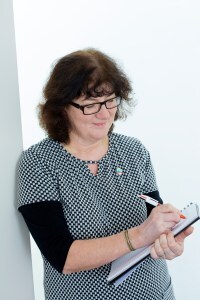 It’s never too late to start writing
It’s never too late to start writingIn a recent WhatsApp discussion with some author friends, we were talking about starting writing relatively late in life. One kindly said to me, “Oh, but you’re a natural”, assuming that my capacity for storytelling had got off to a flying start without any training in 2017 when I published my first novel.
I explained to her that spending decades in a series of day jobs had honed my writing skills, giving me a head start when I began to write fiction. Composing news stories, features and articles as a journalist, and brochures, website copy and press releases in public relations provided a fine apprenticeship in writing prose. Oh, and my degree in English and Related Literature probably didn’t do me any harm either!
Being a lifelong voracious reader has also helped me learn better writing, almost by osmosis.
Every writer should be an avid reader. In my view, writers who never read are like chefs who never taste food. I wouldn’t want to eat meals they’ve cooked.
I’m still learning now, I told her, even with 13 published novels to my name. Every time I go through the editing process, my editors’ comments help me improve my writing craft.
I was pleased when our conversation prompted other writers in the group to reflect how their previous careers and experiences had influenced their later writing lives. Huge thanks to novelists Rod Griffiths, Nicola Kelsall, John Lynch, Nigel Messenger, and Peter Turnham for allowing me to share their experiences with you here on my blog.
Rod Griffiths: “A career in medicine and public health”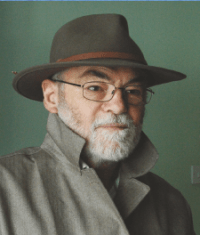 Professor Rod Griffiths CBE BSc MB ChB MA FFPH FRCP
Professor Rod Griffiths CBE BSc MB ChB MA FFPH FRCPI wrote stories at school and was commended for them. Medicine as a career pushed them into the background. When I specialised in Public Health, communication was a vital part of the job. Stories bring lectures to life, so to some extent, I was always writing. Those stories were nonfiction, drawn from experience.
In the mid 1980s I was appointed as Director of Public Health for the West Midlands, a population of 5.2 million people. In the second month of that job an entrepreneurial small businessman in Shropshire dumped several cubic metres of water polluted by recycled paint stripper into the upper waters of the river Severn.
The weird taste made it to the drinking water in Worcester the next morning. By mid-day customers all over the south of the region were complaining to the water company. The protocol for pollution events covering multiple districts said that the Regional Director of Public Health was in charge — me.
I spent the next 48 hours leading a team of people working with the water company and local authorities, trying to find out why the water tasted strange and finding ways to keep the population safe.
The first night, I spoke to every toxicologist that I could wake up. So many different possibilities went through my head. When it was all over, nobody died, and everything got back to normal, but for several weeks I found it difficult to get it all out of my mind — I suspect it amounted to a sort of post-traumatic stress.
I remember saying to my wife, there ought to be a novel in this, not the real events, but all the other possibilities that ran through my mind over those 48 hours.
I took a week’s holiday in a ski chalet in the Alps and wrote forty thousand words of Don’t Drink the Water, an as yet unpublished novel. I finished the book by getting up half an hour early every day, writing about three hundred words each morning.
I sent the finished book to various agents. Most had no comments, but one said I needed to decide whether it was a textbook, a memoir, or a novel. I think that was the most useful advice I have ever had about my writing. I think anyone who was inspired by their career to write fiction would do well to heed that advice.
 Rather than revise Don’t Drink the Water, I wrote an entirely new novel, based around a different scenario. Side Effect, based on Guillain Barre syndrome, was the first book I completed and published. Aimless Fear, my next book, was inspired by aspects of the foot and mouth epidemic.
Rather than revise Don’t Drink the Water, I wrote an entirely new novel, based around a different scenario. Side Effect, based on Guillain Barre syndrome, was the first book I completed and published. Aimless Fear, my next book, was inspired by aspects of the foot and mouth epidemic.
In the last years before retirement, I was in charge of emergency planning across the region. Although that experience could have provided many scenarios for fiction, I took a personal decision to not write anything based on that experience, in order to avoid any possibility that my knowledge might provide assistance to terrorists, or other people with malign intent.
For more about Rod Griffiths’ books and writing, visit:www.blackpear.net.
Nicola Kelsall: “Everything goes into the melting pot.” Nicola Kelsall
Nicola KelsallI had no idea that the things that I experienced as a young adult would have any bearing whatsoever on my current life as an author, (I didn’t think of publishing until I was 55 years old). but I’m so glad now that I did have such a lot of different jobs and life-experiences in my past.
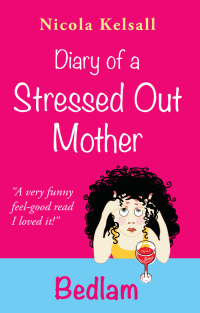 The first in Nicola’s trilogy
The first in Nicola’s trilogyI also met a lot of very different kinds of people and was lucky to be exposed to a myriad of views and attitudes to life which have informed my writing life hugely.
On top of this, is the enormous number of books I’ve had time to read and absorb into my subconscious, which I’m sure has had the same effect! (Although I have to admit, my memory isn’t terribly reliable, so don’t ask me about specifics!)
I suppose what I’m trying to say, is that all these things go into the melting pot of your brain and hopefully have the effect that the writing one produces is at least interesting and at best, original.
To find out more about Nicola Kelsall and her books, visit www.nicolakelsall.com.
John Lynch: “Being a salesman is the best grounding for being a writer.” John Lynch
John LynchYou ask for people who started writing later in life and that isn’t me – my earliest memory of telling a story dates from 1947, when I was 4.
Six years later, aged 10, I stood on the stage at Benton Park Primary School in Newcastle one parents’ day and read to the assembled pupils and parents a story I had written. Mr Hall, the headmaster, and Miss McGowan, the teacher, told me I was destined to become a writer. And I did write a great deal – all of it unpublishable.
Then, in 1968, I was working for IBM. I had just written my very first program when IBM said, “We’d like to make you a salesman.”
I said that’s ridiculous, everyone knows salespeople have to be extroverts and I’m not. (I wasn’t the most extreme kind of introvert – I’d look at your shoes rather than my own when I was talking to you but still, an introvert was what I was).
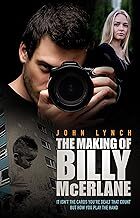
And IBM said, “No, that’s a common misconception: you can’t know what’s going on in the other guy’s head unless you understand what’s happening in your own, so the best salespeople are introverts who’ve learned to present as extroverts. And we will teach you.”
And they did, and that made all the difference for me as a writer because with their guidance I learned, in effect, to look out at people from behind a screen. The screen was the person they thought they were talking to, and the person behind it was analysing their behaviour and working out what lay behind it. I can’t think of a better grounding for a writer. (Mr Hall and Miss McGowan, by the way, turn up under other names in my coming-of-age book, The Making of Billy McErlane).
For more about John’s books and writing, visit www.jlynchblog.com.
Nigel Messenger: “Meeting interesting and inspiring people” Nigel Messenger
Nigel MessengerI had never considered whether my background had any relation to my current efforts as an author until you asked your question, Debbie.
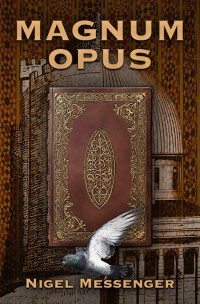 I have spent a lifetime in the hospitality industry, specifically working in hotels. During this time I have met thousands of “celebrities” including members of the Royal Family, actors, business leaders, comedians, sporting stars, authors, politicians and the like.
I have spent a lifetime in the hospitality industry, specifically working in hotels. During this time I have met thousands of “celebrities” including members of the Royal Family, actors, business leaders, comedians, sporting stars, authors, politicians and the like.
Invariably we chatted and exchanged stories and gossip and I have a clear memory of most of these encounters.
I also had the privilege of working for the Poppy Factory for more than 30 years and again have heard stories from hundreds of veterans, giving me a fund of information.
For more information about Nigel Messenger’s books, visit www.nigelmessengerblog.com.
Peter Turnham: “The New Scientist – plus a snapped Achilles tendon!” Looking back, it’s difficult to see any indication that I had even the remotest writing skill. The fact that I have achieved a small degree of writing success I find amazing! Dyslexia in the 1950’s and 60’s did not exist, and so the inability to read and write with any fluency closed virtually every academic door. Dyslexia is a strange beast, it seems to be a case of swings and balances. Dyslexics generally seem to excel in other areas, which is counterintuitive when you carry a label saying dimwit!
Looking back, it’s difficult to see any indication that I had even the remotest writing skill. The fact that I have achieved a small degree of writing success I find amazing! Dyslexia in the 1950’s and 60’s did not exist, and so the inability to read and write with any fluency closed virtually every academic door. Dyslexia is a strange beast, it seems to be a case of swings and balances. Dyslexics generally seem to excel in other areas, which is counterintuitive when you carry a label saying dimwit!
I strayed into dental technology, which is a combination of artistry and engineering skill. I owned one of the most successful dental laboratories in the country before I was 30 years old. I’ve had a personal secretary from the age of 25, and so what little writing I needed to do was done for me.
I did write a few technical papers and promotional literature, but these were scribbled with a pen and left for my secretary to decipher.
Later careers and projects include house building, trout farming, building lakes and running a trout fishery. None of which requires any literacy skills. Once again I wrote some technical papers and promotional literature, and by then my wife Carol had the onerous task of deciphering it.None of my activities involved any great writing skills.
My reading up to the age of 69 was exclusively non-fiction.
I read technical literature to do with my careers or projects, and general science for pleasure. I have read every copy of New Scientist for the past 40 years! But crucially for the purpose of this debate, I had never read a novel! This was my background when at the age of 69 I snapped my Achilles tendon. With a trout fishery to maintain and a lot of land to manage, sitting with my foot up for weeks on end was mentally disastrous.
In serious desperation I said I was going to write a novel! For someone who had never read a novel, can’t spell, and reads very slowly, it was like saying I would climb Mount Everest.
The intention was to provide a mental challenge in an attempt to maintain my sanity.
The first draft achieved exactly that. It contained all the words, but definitely not in the right order. The second draft, with considerable help, was almost readable. A third draft was sent to a professional editor who provided me with six pages of reasons why it was utter rubbish.
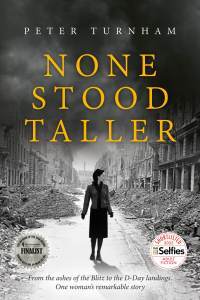 He did, however, say there was a spark of something there if he looked hard enough. I therefore produced yet another draft and eventually published it. It sold a few copies and paid for itself. A sequel followed which also paid for itself. A change of genre followed, this time historical fiction, and it became an Amazon best seller!
He did, however, say there was a spark of something there if he looked hard enough. I therefore produced yet another draft and eventually published it. It sold a few copies and paid for itself. A sequel followed which also paid for itself. A change of genre followed, this time historical fiction, and it became an Amazon best seller!
If there is any lesson to be learnt, it is that the technicalities of writing can be learnt at any age, even by dimwits.
The only “gifts” I bring to writing are determination, perfectionism, and a creative imagination, all of which are typical dyslexic traits. There is no such thing as perfection in writing, but you can be determined to achieve your own version of it.
It’s never a case of, do you want to succeed, it’s a case of how much do you want to succeed.
So You Think You’ve Got a Book in You? As these examples show, it’s never too late to start writing – and whatever your past career and life experience, you will be a better writer for your unique experience.
As these examples show, it’s never too late to start writing – and whatever your past career and life experience, you will be a better writer for your unique experience.
If you’re teetering on the brink of starting out as a writer, or have stalled and need a kickstart, you might like to attend the workshop I’m running at the Evesham Festival of Words on Sunday 30th June, called “So You Think You’ve Got a Book In You?”
The workshop will help you define your book idea and turn your idea into reality, whatever your chosen genre – novels, short stories, poetry, non-fiction, memoir, local history, and more. The session will include helpful case studies, constructive exercises, top tips for writing well and consistently, an overview of publishing opportunities in the UK today, and the best route to publication for your project.
Find out more about this workshop at the Festival website here.
April 17, 2024
Coned Off
In my column for the April issue of the Hawkesbury Parish News, I take issue with a local problem that’s also been making national news.
When I tell city-dwelling friends that our village is surrounded by single-track roads, they often react as if that’s idyllic, but confess to a fear of driving on narrow country lanes. They’d be even more frightened if they saw how peppered are lanes are with potholes.
No wonder my poor Fiat Panda has just failed its MOT due to faulty suspension. And no, it’s not due to my reckless driving over these craters.
I’m such a cautious, careful driver that I hadn’t noticed my car’s other fault, that the horn didn’t work, because I never use it.
Rumour has it that if potholes damage our tyres, we can claim the cost of repairs from the local council, provided we’ve already alerted them to the pothole responsible.
It might be simpler if we sent them a list of which stretches of local roads don’t have potholes. It would fit on the back of a council tax envelope.
I haven’t given up hope that the council will fix our local lanes eventually, because lately roadworks seem to be on every other road I travel. So rare is the journey uninterrupted by lane closures and diversions that reaching any destination unhindered feels like a win.
 Novice driver Sophie Sayers gets to grips with motoring in narrow country lanes in “Driven to Murder”
Novice driver Sophie Sayers gets to grips with motoring in narrow country lanes in “Driven to Murder”All the obstacles along our roads make me feel like real-life Mario Kart. I seldom play that car racing videogame, because I’m far more likely to plummet over a cliff than collect gold coins. By the same token, I avoid the dodgems at Hawkesbury Show: they fill me with a sense of impending doom.
My father tells me that councils rush to finish highway repairs by the end of each financial year to avoid losing funding the following year. In that case, this rash of roadworks ought to disappear overnight on 5th April. I was just wondering what they’d do with all the surplus traffic cones on 6th April, when I discovered a new and appealing use currently popular in San Francisco, where driverless cars are now commonplace.
 Photo of San Francisco’s Golden Gate Bridge by ScottS via morguefile.com
Photo of San Francisco’s Golden Gate Bridge by ScottS via morguefile.comLocal residents of the Californian city don’t believe the motor industry’s hype that “robo-taxis” are safer than cars driven by humans. They cite alarming incidents of them stopping outside fire stations blocking fire engines on calls, or not stopping when they should do and crashing into the backs of buses.
You can’t reason with a robo-taxi, but if you place a traffic cone on its bonnet, it will grind to a halt.
It’s the high-tech equivalent of making a budgie think it’s night-time by covering its cage with a tea-towel. For as long as the traffic cone is on its bonnet, a robo-taxi will refuse to move, assuming it’s an obstacle in its path. No wonder “coning” is catching on.
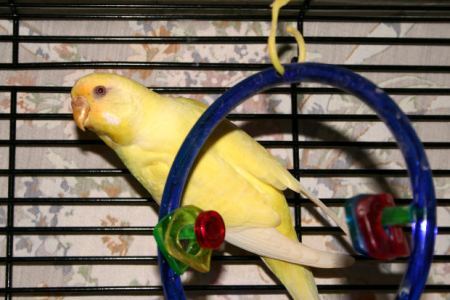 Photo of budgie in cage by xandert via morguefile.com
Photo of budgie in cage by xandert via morguefile.comNow I can’t help wondering what a San Francisco robo-taxi would make of our potholed country lanes.
Remarkable Car Journeys in My Books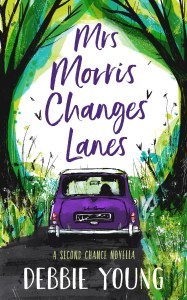 A fun, quick-read novella set in the springIn
Murder in the Highland
s, set in Scotland, Sophie and Hector are pursued on their motorway by a mysterious stranger.
Driven to Murder
includes an ill-fated bus journey and a car chase through Cotswold country lanes – not built for high speed motoring!In
Sinister Stranger at St Bride’s
, the “stranger” of the title undertakes a risky motorway journey trying to evade detection.In
Artful Antics at St Bride’s
, Gemma’s life is at risk when a local tycoon sends his eccentric chauffeur to collect her from the school.In
Mrs Morris Changes Lanes
, a remarkable car takes Juliet Morris on a life-changing journey, guided by a satnav with a mind of its own.
A fun, quick-read novella set in the springIn
Murder in the Highland
s, set in Scotland, Sophie and Hector are pursued on their motorway by a mysterious stranger.
Driven to Murder
includes an ill-fated bus journey and a car chase through Cotswold country lanes – not built for high speed motoring!In
Sinister Stranger at St Bride’s
, the “stranger” of the title undertakes a risky motorway journey trying to evade detection.In
Artful Antics at St Bride’s
, Gemma’s life is at risk when a local tycoon sends his eccentric chauffeur to collect her from the school.In
Mrs Morris Changes Lanes
, a remarkable car takes Juliet Morris on a life-changing journey, guided by a satnav with a mind of its own.I won’t say more than that for fear of spoiling the plots, but I hope you’ll want to read them all to share the various rides!
All my novels are available as ebooks, paperbacks, hardbacks and audiobooks.
The novella Mrs Morris Changes Lanes is available in ebook and paperback.
April 3, 2024
Springing Forward
In my article for the April issue of the Tetbury Advertiser, I ponder the different definitions of Spring.
After the wettest winter that I can remember, I’ve been looking forward more than ever to the spring.
January and February are in any case my least favourite months, so I’m always glad when 1st March comes around. But this year, I’m particularly pleased because I’ve just discovered that meteorologists count it as the first day of spring.
How did I not know that before? I’d always believed spring started at the equinox, halfway between winter and summer solstices, around 21st March. Now I learn that’s only in astronomical terms.
Date alone is of course no guarantee that it will start to feel like spring. There are more reliable indicators.
 The yellow flowers of laburnum, out before the leaves, are one of the earliest harbingers of spring in my garden
The yellow flowers of laburnum, out before the leaves, are one of the earliest harbingers of spring in my gardenI used to include the appearance of daffodils and lambs among them, but in recent years I’ve so often spotted them before Christmas that I’ve crossed them off my list.
When I kept chickens, their return to laying was a surer sign of spring, as it’s triggered by the increase in daylight hours.
Now the only animals in my household are cats. They have their own ideas about when spring starts, as cats do about most things. Mine must be optimists, because they’ve been shedding their winter coats since January, even though the weather continued to be cold enough to justify thermal vests (for me, not for them).
 Bertie tiptoes through the tulips and rhubarb
Bertie tiptoes through the tulips and rhubarbBy the start of March, they were spending a lot more time out of doors, lured by birdsong and transfixed by numerous frogs playing hide-and-seek in the pond.
Although I lingered indoors in the warm, I kept a watchful eye on the garden from within. Through my study window, I spotted plum blossom on the otherwise bare branches. (Unlike apple trees, plums produce flowers before leaves).
 The leaves are now playing catch-up with the white blossom on my plum trees
The leaves are now playing catch-up with the white blossom on my plum treesFrom the French windows downstairs, I noticed a new red tulip appearing every day, then another, then another, until there was a neat row of them along one flowerbed like soldiers on parade.
 Tulips – my favourite flower. Did you know that they keep growing even when you cut them and put them in a vase?
Tulips – my favourite flower. Did you know that they keep growing even when you cut them and put them in a vase?Halfway down the garden I spied bright green leaves unfurling, the rhubarb emerging from subterranean hibernation.
 The luscious taste of spring unfurling in my garden
The luscious taste of spring unfurling in my gardenFurther evidence of spring arrived when the familiar chime heralded a visit from the ice-cream van, and I realised to my surprise it was no longer too cold to enjoy ice cream, tucking into my first 99 of the year.
I needed only one final proof of spring’s arrival: the start of British Summer Time. Checking my calendar, I discovered that this year, it falls on Easter Sunday. As a churchgoer, I found this double symbol of fresh starts and hopeful new beginnings especially pleasing.
 The beautiful Easter garden at St Mary’s, my local parish church
The beautiful Easter garden at St Mary’s, my local parish churchIt’s also distribution day for the April issue of the Tetbury Advertiser. What more could I wish for? Here’s to a bright and cheerful spring for us all.
 My column, Young By Name, and my 99 ice cream are cover stories on the April 2024 issue of the
Tetbury Advertiser
! Click here to read the whole issue online free of charge.Spring Reading
My column, Young By Name, and my 99 ice cream are cover stories on the April 2024 issue of the
Tetbury Advertiser
! Click here to read the whole issue online free of charge.Spring ReadingIf that little array of spring photos has put you in the mood for some spring reading, here’s a selection of seasonal books to choose from. All are available as ebooks and paperbacks to buy online and to order from bookshops, and the novels are also available as hardbacks and audiobooks.
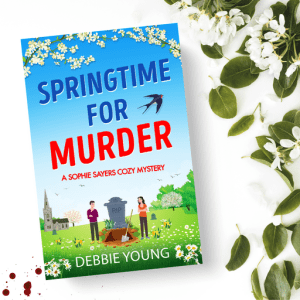 In the fifth Sophie Sayers cozy mystery novel, the story begins with an unexpected find in an open grave in the parish churchyard.
In the fifth Sophie Sayers cozy mystery novel, the story begins with an unexpected find in an open grave in the parish churchyard.Click here to order Springtime for Murder
 The Clutch of Eggs is a fun novelette featuring Sophie Sayers and friends – and in this story, teenage tearaway Tommy takes up birdwatching, with hilarious results.
The Clutch of Eggs is a fun novelette featuring Sophie Sayers and friends – and in this story, teenage tearaway Tommy takes up birdwatching, with hilarious results.Click here to order The Clutch of Eggs
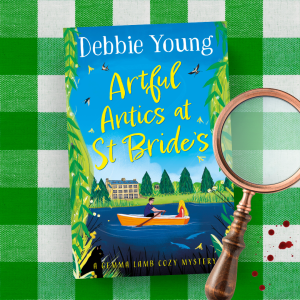 In the fourth Gemma Lamb cozy mystery novel, an enigmatic new pupil and her mysterious guardian come to St Bride’s School. There’s also a flying visit from Sophie Sayers and Hector Munro – what fun!
In the fourth Gemma Lamb cozy mystery novel, an enigmatic new pupil and her mysterious guardian come to St Bride’s School. There’s also a flying visit from Sophie Sayers and Hector Munro – what fun!Click here to order Artful Antics at St Bride’s
 A quick-read novella in which the middle-aged Mrs Morris makes a fresh start, with a little help from a rather magical little car, as she drives out from Cirencester and into Cotswold country lanes.
A quick-read novella in which the middle-aged Mrs Morris makes a fresh start, with a little help from a rather magical little car, as she drives out from Cirencester and into Cotswold country lanes.
March 27, 2024
In Conversation with Novelist JJ Marsh
 Meet novelist JJ Marsh
Meet novelist JJ MarshThis year, my last blog post of every month will be a conversation with one of my author friends, talking about an aspect of their writing life that I hope will interest my readers too.
Today I’m delighted to welcome JJ Marsh. Jill is a prolific author of critically acclaimed thrillers set all over Europe and also in South America.
Yet her latest book, Salt of the Earth, is a gentle historical novel inspired by a revolutionary episode of medical history that deserves to be much better known: the century-old discovery of effective treatment for a particular form of hypothyroidism.
I’m delighted to share my recent conversation with Jill to tell you the story behind the story and to bring her work to a wider audience.
Debbie: Jill, you usually write contemporary fiction. What was it about this story that caused you to sidestep into historical fiction (something I’ve always shied away from myself), and how hard was it to change course?
Jill: Every writer encounters a moment, idea or concept which thrills you to your bones. Browsing the Swiss Museum’s blog, I stumbled over a historical note and immediately knew it was extraordinary. I talked to my husband – the marketing expert – and he agreed it was a story worth telling.
Debbie: P lease describe the medical revolution at the heart of the novel.
Jill: In a nutshell, certain areas of Switzerland suffered from chronic hypothyroidism, manifested by huge goitres, brain fog, ‘cretinism’ as it was called in those days and severe under-development.
We’re talking a centuries-old affliction.
One doctor – Hunziker – posited a theory that this malaise was not caused by poor hygiene or bad air, but a lack of an essential element: iodine. Dr Otto Bayard took it upon himself to test the hypothesis by treating local villagers with iodised salt.
Debbie: Where did you first hear about Dr Bayard’s revolutionary work, and how did you find out all that you needed to know to write your novel about it?
Jill:
To be honest, I couldn’t believe no one was talking about this incredible breakthrough which changed the face of Switzerland.
In Zürich, we’re lucky to have the Zentralbibliothek, which holds a goldmine of information, including handwritten correspondence from over a century ago.
I also interviewed an endocrinologist from Lausanne, a professor from Zürich University, visited Bayard’s village and read the definitive works on the subject in French, German and English.
Debbie: Have you or your family been personally affected by goitre (the most visible outward symptom of thyroid insufficiency) or was there another reason that this story piqued your interest?
Jill: Hand on heart, I knew pathetically little about the thyroid gland. Only through research and educating myself did I learn its importance.
My fascination originated in how Swiss (French, Austrian, US etc) lives changed when iodine was introduced as a food intervention.
Debbie: Although three people in my family have underactive thyroid, I’d never heard about Bayard’s work before – even though I’m very familiar with the almost contemporaneous story of the isolation of insulin to treat Type 1 diabetes, which affects my daughter and my husband. Why does Bayard’s story seem more obscure? (Or am I just ignorant?!)
Debbie, you’re far from ignorant. Everyone in Switzerland knows the tale of William Tell. But hardly anyone knows the story of how three country doctors erased a malaise dating from Roman times.
Their achievements not only transformed the Alpine communities, but changed places as distant as the Great Lakes and the Himalayas.
That is why I had to tell this story.
 Dr Bayard’s surgery
Dr Bayard’s surgeryDebbie: You’re a British-born Swiss citizen. Bayard’s breakthrough should be a huge source of pride to the Swiss nation. How important was the Swiss element of the story to you? How typically Swiss is it for a major medical breakthrough to unfold quietly and modestly in out-of-the-way places?
It should be a huge source of pride, but people have short memories.
Early 20th century tourists came to the Alps to admire the mountains and marvel at the people, as if they were a freak show. Iodised salt was also a political battle, where another hero emerges. Dr Hans Eggenberger convinced his canton to vote for iodised salt and the rest of the country followed.
Debbie: Your story is obviously based on fact, but you’ve used a fictional format to bring it to vivid life. How did you decide how much of it to make up? ,
Relating the facts can be very dry. I needed to employ characters who suffered, struggled and overcame the very real challenges and conflicts of the time.
This medical advance happened towards the end of the First World War, when turmoil and social unrest was frighteningly close. Lenin wrote in the very same library I mentioned above, and Zürich was at the centre of an artistic revolution. I wanted readers to identify with my invented figures and the romance added an extra level of tension.
Debbie: Although in many ways, Salt of the Earth is a complete departure from your usual territory, what common ground is there between writing about the solution to a medical dilemma and solving fictitious crimes?
Much as I loved bringing this vitally important development in Swiss and medical history to life, the research is a massive responsibility. I owe it to Hunziker, Bayard and Eggenberger to get things right.
As I said to my writing group when I’d finished, ‘I can’t wait to get back to making stuff up’.
Debbie: The novel has been very well received. What has pleased you most about its success?
What makes me happiest is when readers say they learned something – whether it’s about iodine deficiency and hypothyroidism, Alpine life 100 years ago, Switzerland’s role in WWI or how dramatically Europe changed in the early 20th century.
Debbie: Where can people buy a copy of Salt of the Earth, and in which formats is it available?
It’s available as ebook and paperback, in both English and German here: https://geni.us/AMZ_Salt_of_the_Earth

Debbie: Finally, please share a summary of your other books and writing, which I also highly recommend.
The Beatrice Stubbs Series:
14 crime novels set in different European locations
The Run and Hide Series:
4 (so far) international thrillers about a hunted woman
Two standalone psychological thrillers:
Odd Numbers and Wolf Tones
 A good starting point for reading JJ Marsh’s international crime thrillers
A good starting point for reading JJ Marsh’s international crime thrillersDebbie: What’s next for you, Jill?
Just finishing Blood and Sand, Book 5 in the Run and Hide Series, before starting work on a new historical fiction novel, currently titled The First Lady of the Alps. I can’t say too much about the story yet, but it includes some very real and absolutely remarkable people.
Thanks so much for inviting me and spreading the word about the book. This story is very special to me.
For more information about JJ Marsh and to sign up for her enewsletter, visit her website:
March 13, 2024
What I’ve Learned from Public Buses
The campaign to save our village bus service has set me reminiscing about Bus Services I Have Known.
When I was growing up in suburban London, my home turf of Sidcup was served by the iconic red Routemaster – the old-fashioned double-decker as featured in the Cliff Richard film Summer Holiday.
In those halcyon days before invention of Health and Safety, passengers boarded via an open platform at the rear. The metal pole that ran from floor to ceiling of the platform must been there to strengthen the back of the vehicle, but it was also useful if you were running for a bus that was already leaving the stop. You just grabbed the pole and jumped, in hope of landing on the platform. It was something of a sporting feat.
Our route was the 51, a number that still means “bus” to me.
In the days before we had a car, the 51 was the starting point to every outing. The elephantine silhouette lumbering towards the bus stop was a welcome sight, whether we were heading for the high street, the railway station, or to see my grandparents. The fare for a family trip was “two fours and three twos” – fourpence per adult and tuppence per child, i.e. one shilling and tuppence (6p).
The bus conductor printed the flimsy white paper tickets in a continuous strip from a metal box strapped to his chest, concealing a narrow roll of paper. He dialled up each fare with little metal cogs, then turned a handle on the side to print each ticket. When replacing the roll, the conductor often gave me the old one to play with, complete with a strip of blank paper for drawing on.
It was a good incentive to be polite to the bus conductor, just in case his roll ran out during my journey.
When I reached secondary school, the 51 was the starting-point for my two-bus journey to Chislehurst, changing onto the 228 at Sidcup Station. Depending on the school term, I might need to juggle my brown leather satchel plus any of the following on my journey: cookery tin, guitar, and weaving loom. This made it tricky to negotiate the spiral stairs to the top deck, but that didn’t stop me.
Chatting with my friends up there was an important part of every school day and formative social time.
When I was 14, my family moved to Germany, and I took a single-decker school bus, American-style, to Frankfurt International School. During the next four years, I gradually worked my way towards the back of the bus. In my final year I travelled on the rear bench seat to which all ages aspired, while also keeping a watchful eye on the little kids further down to root out bullying and other misdemeanours.
It was an object lesson in earning social status.
At university in York, long-distance buses were the most affordable way to visit my grandparents in London or my sister in Bristol. (My parents were still living abroad.)
Negotiating London’s Victoria Coach Station opened up new horizons for bus travel. It seemed you could get a bus to almost anywhere from Victoria.
Travelling abroad, my most memorable bus journeys were in Greece, touring islands and crossing the width of the country. Greek bus drivers seemed to think using their mobile phones was compulsory while the vehicle was in motion, even when careering around hairpin bends on mountain roads with no cliffside barrier – a test of any passenger’s nerve.
On a solo trip from Lefkas, when the driver asked whether we were going all the way to Athens, I got my foreign languages mixed up and replied “Ja” instead of “Ne” – the German instead of the Greek for “yes”. For the rest of the trip, passengers old enough to remember the War subjected me to hostile glares, while I tried to find new and different ways of looking overtly British. It was an informal lesson in international diplomacy.
As the Save the Wotton-under-Edge to Yate Bus Service Campaign rightly points out, there are numerous socio-economic reasons to keep the 84/85 route serving our rural community: it provides access to education, apprenticeship, work, healthcare and leisure activities.
But I’d like to add my twopennorth to that list, as befits someone used to travelling by bus for tuppence:
I’ve learned many life skills on bus rides. Long may we all be able to do so.
PS My latest novel, Driven to Murder, revolves around a campaign to save a village bus service. It is of course entirely fictitious!
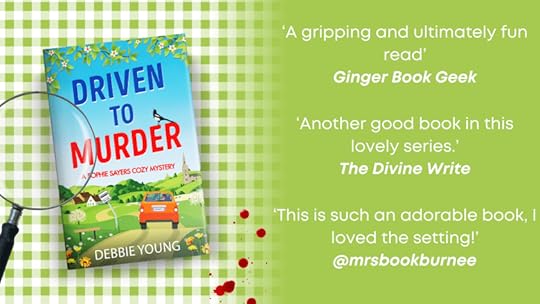
This post was originally written for the March 2024 edition of Hawkesbury Parish News.
IN OTHER NEWSMy good friend Michael Macmahon shares my passion for public transport and kindly invited me onto his lively podcast, entitled Don’t Get Me Started!, for an enjoyable conversation about rural buses in particular, in support of the campaign to save our local bus service. Click the image below to tune in.
March 6, 2024
When in Corinium…
In my column for the March issue of the Tetbury Advertiser , I describe a fascinating afternoon researching Corinium – the ancient Roman name for what’s now the Cotswold market of Cirencester.
As part of my research for a new novel (the first in a new series), I finally get round to revisiting the Corinium Museum in Cirencester.
I’ve been meaning to do this since it had a major refit 20 years ago. Still, better late than never, and I’m glad my current project has given me the nudge I needed. Cheerful staff give us a warm welcome and invite us to travel back in time to experience the history of the Cotswolds since the earliest days of human settlement.
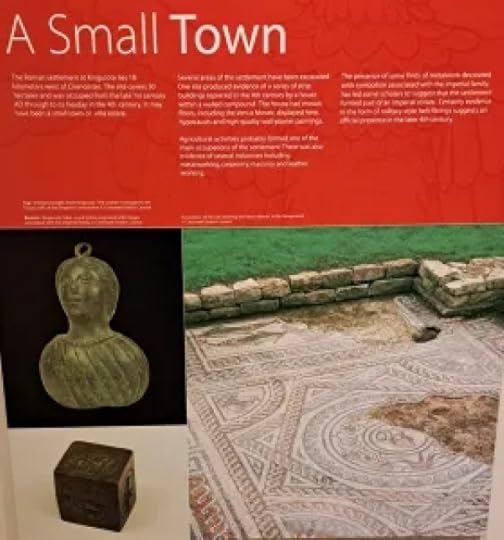 Bright, helpful signage tells you just enough to help you appreciate the displays
Bright, helpful signage tells you just enough to help you appreciate the displaysFor the purposes of my novel, I’m particularly keen to see the museum’s extensive display of Roman mosaics, formed from tiny hand-cut tesserae (tiles) of stone and clay and set into intricate patterns by highly skilled craftsmen. Retaining the natural colours of these raw materials, the mosaics are still as bright as they must have been two millennia ago, and as pleasing to modern eyes as to those of the Ancient Romans.
 This vast mosaic is wall-mounted to protect it from 21st century footsteps
This vast mosaic is wall-mounted to protect it from 21st century footstepsMost of the mosaics are either wall-mounted or roped off to prevent visitors traipsing across them, but there’s one small mosaic square that visitors are encouraged to walk on.
“Just think,” says an eager museum volunteer as we stroll across the Meander Maze, “you’re treading exactly where Roman feet once trod.”
 This one reminded me on an incomplete jigsaw puzzle – I was itching to find the space pieces and fill in the gaps!
This one reminded me on an incomplete jigsaw puzzle – I was itching to find the space pieces and fill in the gaps!Her enthusiasm is infectious. In fact, we’re so buoyed up by our close encounter with Cirencester’s ancient forerunner, the city of Corinium Dobunnorum, that on our way home we follow the brown sign off the ring road to the Roman amphitheatre – another local sight I’ve never seen before. Driving past the sign, I’ve always thought, ‘I really must go there some day”. Approaching the historic monument via a pleasant waterside trail, I’m glad I’ve followed through at last.
 Photo accreditation: Site of Roman Amphitheatre, Cirencester by Rob Noble, CC BY-SA 2.0 <https://creativecommons.org/licenses/by-sa/2.0>, via Wikimedia Commons
Photo accreditation: Site of Roman Amphitheatre, Cirencester by Rob Noble, CC BY-SA 2.0 <https://creativecommons.org/licenses/by-sa/2.0>, via Wikimedia CommonsThe amphitheatre, unlike the mosaics, is unprotected from the elements. Although the stonework is no longer in evidence, the giant grassy bowl, slick with mud in the half-term drizzle, is remarkably atmospheric, especially when the younger members of our party decide to play gladiators in the arena.
I return home wishing I hadn’t left it so long before visiting either attraction.
On the other hand, a couple of decades is the blink of an eye compared to the time it took for Corinium Dobunnorum to evolve into modern-day Cirencester.
And the revamped Corinium Museum still looks and feels as fresh and vibrant as it must have done twenty years ago.
I just wish the same could be said for me.
IN OTHER NEWSMy trip to ancient Corinium instilled me with a vivid “sense of place” – the theme for the next Hawkesbury Upton Literature Festival event which I’ll be chairing on Saturday 27th April at St Mary’s, Hawkesbury GL9 1BN, in the company of many local authors of memoir, historical and contemporary fiction. There’ll also be beautiful readings of evocative poetry and prose.
If you’re within easy reach of Hawkesbury, do come and join us. For more information and to book tickets, visit the HULF website or go straight to the Eventbrite booking page.
February 28, 2024
In Conversation with Thriller Writer Alison Morton
This year, my last blog post of every month will be a conversation with one of my author friends, talking about an aspect of their writing life that I hope will interest my readers too.
 Meet my friend Alison Morton!
Meet my friend Alison Morton!This month, thriller writer Alison Morton is my guest. Alison and I have had parallel careers as novelists, with us each writing two series, all falling under the broad heading of crime fiction. But whereas mine is lighthearted cozy mystery set in the comfy Cotswolds, Alison’s is serious stuff, pan-European thrillers, one series of modern stories, and the other alternative history.
I’m always interested in what Alison’s up to, but the reason I’ve invited her onto my blog today is that she is celebrating the launch of her eleventh Roma Nova book: Exsilium.
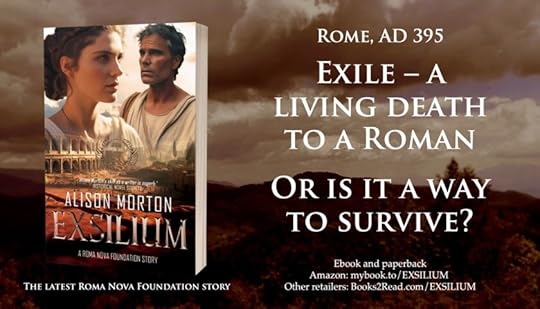
But where’s Roma Nova? I hear you cry!
Alison, if Roma Nova were a real country, how would its Wikipedia entry read?
Alison:
Roma Nova (ˈrɒmə ˈnəʊvə), officially Colonia Apuliensis Roma Nova is a landlocked Latin-speaking country located in the Eastern European Alps. It borders New Austria and Italy. Roma Nova is a semi-constitutional monarchy headed by an imperatrix who rules in association with an appointed Senate and an elected People’s Assembly.
With an area of 2,950 square kilometers (1140 sq mi), it supports a population of 1.5 million (2019). Economically, Roma Nova has one of the highest gross domestic products per capita in the world based on mining and processing minerals, especially silver, powerful technology and engineering sectors, financial services and specialist agricultural exploitation. It maintains military national service and a unique matrilineal social structure. It belongs to the European Economic Area and the United Nations and often acts as an intermediary between nations.
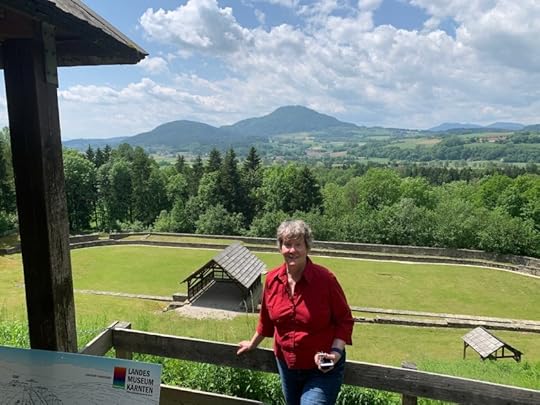 Alison enjoying a visit to Virunum, the real-life location for her fictitious Roma Nova
Alison enjoying a visit to Virunum, the real-life location for her fictitious Roma NovaAlison: You might also like to read this tourist guide to Roman Nova, written by a certain Claudia Dixit, which I’ve shard on my blog here:
Debbie: That’s great fun, thank you! Now, speaking as someone who has written two series of novels in chronological order – the first seven Sophie Sayers books run the course of a village year from one summer to the next, and the Gemma Lamb series, when complete, will cover an academic year, with two books per term – I am intrigued by the more complex order in which you wrote your books. Please enlighten us!
Alison: this chart gives a clear picture of when each book was published, when it was set, and where it falls in the chronological order of the series.
Title and date publishedTime story setChronological orderINCEPTIO – March, 2013Approx 20107PERFIDITAS – October 201320169SUCCESSIO – May 20142023/410AURELIA – May 20151968/93INSURRECTIO – April 20161984/55RETALIO – April 20171986/76CARINA (novella) – November 201720138ROMA NOVA EXTRA (stories) – October 2018AD370-2029MixedNEXUS (novella) – September 2019Mid 1970s4JULIA PRIMA – August 2022AD 3701EXSILIUM – February 2024AD 383-3952And here are the covers in all their glory!
 The complete works of Alison Morton, across both her series of thrillers
The complete works of Alison Morton, across both her series of thrillersDebbie: How did you come to write the Roma Nova novels in this order? Was it a process that evolved or did you plan it this way from the start?
Alison: Totally chaotic and unplanned! In late 2009, I set out to write a book to express ideas I’d had bubbling in my head for decades – Romans, woman hero, military, thrilling story with a dollop of romance. That was Inceptio. Before it was even polished up and when I was ignorant of the publishing and book world, I had written the manuscript of Perfiditas. The characters were starting to push me to write the ‘what happened next?’’ story so I wrote Successio, which brought in the next generation. I thought that was it. Trilogy done.
Then Aurelia, the elder stateswoman mentor of Carina, the heroine of my trilogy, started nagging me, so I had to write her story, Aurelia. But what had she done in the Great Rebellion the other characters kept going on about? What were the secrets of her younger self? So I went back to 1968 and the series time anomaly opened…
I ended up writing about the Great Rebellion in Insurrectio and the resolution in Retalio. Right, that was it! No more.
Then every one of my writer friends started writing novellas.
Debbie: Guilty! I confess!
Alison: I had a nagging feeling there were gaps in my trilogies when we knew nothing of the lives the Roma Novans were living between the books. Why didn’t I have a go at some short fiction for a change?
Carina in 2017 filled in a gap between Inceptio and Perfiditas and highlighted the conflict of duty, love and loyalty and Nexus in 2018 filled the fourteen-year gap between Aurelia and Insurrectio and set up a few things for Retalio. Both were short at 38,000 words.
In between, I put together eight short stories that really blasted the time continuum apart, varying between AD370 to 2029 in the future!
Why did I go back into the deep past of the late fourth century with Julia Prima and now Exsilium? Because the fans kept on asking me. And it was fun to write straight historical fiction.
Debbie: With the publication of Exsilium, do you now recommend readers new to your series start with that book, or is it better to read them in the order you wrote them? I know they all work as standalone novels too.
Alison: It doesn’t really matter. I’ve woven in references between all the books, so those reading from start to finish of the will enjoy little ‘Easter eggs’ (and possibly go, ‘Aha!’) when they see the connections. Perhaps the four Carina books set in the present – Inceptio, Carina, Perfiditas, and Successio – could be read in succession as could the 1960s/80s group of Aurelia, Nexus, Insurrectio, and Retalio. Historical fiction fans might like to start with Julia Prima and Exsilium.
Debbie: With my novels, I’ve had my sights set on the very specific genre of cozy mystery all along, although there are strong romantic and comic elements too. By contrast, the Roma Nova novels bend and blend genres. Some are purely historical novels, and others are alternative history (or alternate history, as our American friends term it) – although of course all ‘althist’ must at least be founded on historical fact. What are the challenges of mixing up the genres within a single series?
Alison: This goes back to what we discussed earlier – chaos! I had no idea that the standard approach was writing in a set genre. I just wanted to write my story.
It dawned on me later that that the book world, especially marketing and selling, ran on strict structural lines. So it’s been a very difficult marketing road.
But once people read one in the series, they very often go on to buy all the others and I’ve had some very heart-warming emails and letters from readers expressing their love for Roma Nova.
That I’ve touched people, and sometimes inspired them, works for me.
Debbie: Sometimes, to both readers and writers, it can feel as if a series has gone on too long. The best writing advice I’ve heard on that score is from our mutual friend, Orna Ross, who told me, “One must be careful not to keep writing the same book over again”, and every time I plot a new addition to my series, I bear that advice in mind. You’ve obviously found a very good way of keeping each novel fresh by changing the timeframe. What other advice would you offer to aspiring authors planning to write series?
Alison: I say this with no irony – plan! I don’t mean a hard and fast structure for your series, but work out a setting/book world that can absorb a lot of different stories.
The second thing is not to write one book, then go slightly more outrageous in the next one, and by Book 10, you’re over the limits of probability and into space cowboys.
Thirdly, interlink the books in some way apart from ‘what happened next’.
Lastly, NEVER finish one book in a series with a cliff-hanger.
Debbie: The Roma Nova novels span many centuries, taking us up to the present day. Would you ever consider writing a speculative futuristic take on Roma Nova? Any thoughts on how that might pan out?
Alison: I wandered a few years into the future in ‘Allegra – An Unusual Love Story’, one of the short stories in the Roma Nova Extra collection and quite enjoyed that, so something to think about. In the future, of course.
Debbie: Anchored firmly in the present is your contemporary Mélisende pan-European thriller series, which currently stands at two books, Double Identity and Double Pursuit. Are you tempted to write a prequel for Mélisende that would take us back in time in that series too?
Ah! I have. ‘The Sand Beneath Her Feet’ is a short story exclusively available as part of a thank-you ebook for signing up to my newsletter. It tells of Mel’s last mission before leaving the French Army. Like many a thriller, it all blows up in her face.
If you care to sign up, you can read it here: https://landing.mailerlite.com/webforms/landing/z8e1q1
Debbie: It seems every time I publish the latest in one of my series, readers ask when the next is due out, but at the request of my publisher Boldwood Books, my current work-in-progress is a new trilogy. It’s still cozy mystery set in the Cotswolds, but all-new in every other respect, but there will be more stories about Sophie and Gemma too. So, now that EXSILIUM is out in the world, what’s next for you? More in either of your series, or do you have any plans to branch out? If your readers will let you, that is!
Alison: I’ve started the first chapter of the Mélisende ‘Doubles’ series and I’m longing to see what she’s going to make of it. However, I have a feeling my Roma Nova readers won’t let it go that easily…
Debbie: Where can readers find out more about you and your books?
Alison: The best starting point is my World of Thrillers site: https://alison-morton.com, where you’ll also find links to my social media accounts and my writing blog, as well as more information about my new book, Exsilium.
 Now available in ebook and paperback – click image to choose your preferred retailer
Now available in ebook and paperback – click image to choose your preferred retailer
February 22, 2024
On Life Imitating Art in “Driven to Murder”
This article originally appeared on Boldwood Books’ blog to mark the publication of my latest novel, Driven to Murder .
In a bizarre incident of life imitating art, as a starting point for the ninth Sophie Sayers Cozy Mystery, I struck upon the idea of the village bus service being cancelled – only to discover shortly afterwards that the bus route passing through my home village of Hawkesbury Upton was also about to be axed.
Although my books are full of comedy, they also subtly gently draw attention to genuine rural issues, such as loneliness and isolation, for added realism.
Public transport is a lifeline to rural communities, especially for the many people who don’t drive or have access to a car. Taxis won’t come out to you as you’re too far from town, and as to take-away services, you might as well be on the Moon!
Only when you lose your public transport do you realise how much you need it.
Children can’t travel to school, teenagers lose their independence, adults can’t get to work, families can’t go shopping or on leisure outings, and no-one can get to medical appointments or banks.
 Hawkesbury Upton has very few buses – and now these few are under threat. (Sadly, The Fox Inn, one of two village pubs, has now closed its doors forever.)
Hawkesbury Upton has very few buses – and now these few are under threat. (Sadly, The Fox Inn, one of two village pubs, has now closed its doors forever.)Losing the bus shrinks your world to your own back yard and cuts you off from vital services that everybody should be able to access – and for which you still have to pay your taxes! *climbs down from soapbox*
 By contrast, in city streets, there are abundant buses at all hours – often many in a single street at the same time. City-centric politicians don’t realise how poorly rural communities are served by public transport.
By contrast, in city streets, there are abundant buses at all hours – often many in a single street at the same time. City-centric politicians don’t realise how poorly rural communities are served by public transport.In Driven to Murder, when Leif Oakham, suave owner of local bus company Highwayman, plans to axe the bus that connects Wendlebury Barrow with the nearest town, the villagers engineer a lively and creative campaign to save the bus. All goes according to plan until one of their number is murdered mid-campaign, in broad daylight, on the number 27!
Ever the amateur sleuth, Sophie pledges to track down the killer before another tragedy can occur – and to save the village bus service along the way.
There’s just one problem: she doesn’t have a driving licence.
A disastrous first lesson with Hector in his precious Land Rover makes her secretly seek an instructor further afield, with hair-raising results.

My husband, who favours action movies, has always told me I ought to add car chases to my books – but I don’t think he meant through single-track country lanes…
Of course, this being Wendlebury Barrow, there’s a happy ending all round, and plenty of surprises along the way.
I just hope we are as successful in winning a reprieve for the Hawkesbury Upton bus.
Back to Reality In the queue to board the bus from Yate to Hawkesbury Upton last week.
In the queue to board the bus from Yate to Hawkesbury Upton last week.If you’d like to support the campaign to save the Hawkesbury Upton bus, join here’s a link to its Facebook group:
https://www.facebook.com/groups/685419006919379
But the simplest and most effective thing to do is to travel by bus!
Although I’m lucky enough to be able to drive and have my own car, there will come a time when I’m too frail or poor to so. I want to make sure the bus is still there for when I need it. Don’t you?
In the meantime, I’ve pledged to make a weekly journey on our village bus service for the duration of the campaign.
If everyone who lived along its route made just one trip a month, our bus service would be saved.
It doesn’t matter how long or short the journey – each trip will boost passenger numbers, the key to the route’s survival.
Of course, these thoughts don’t apply only to my local bus service – wherever you live, whether urban or rural, the message about public transport is the same: USE IT OR LOSE IT!
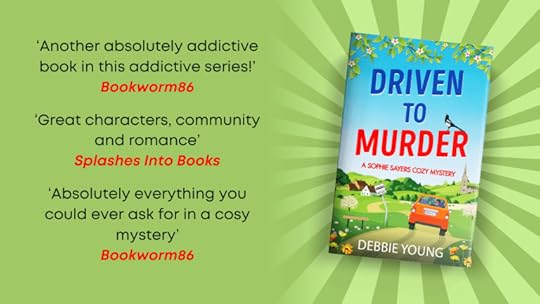 Now available in ebook, paperback, hardcover and audio – click image to order online or ask for it at your local bookshop
Now available in ebook, paperback, hardcover and audio – click image to order online or ask for it at your local bookshop
February 14, 2024
Blowing in the Wind
What’s not to love about windmills? From children’s toys to towering turbines, I shared my views in this article for the February issue of the Hawkesbury Parish News.
Summitting a local hill on a clear morning in early January, I am surprised to spot in the distance a wind turbine that seems to have materialised from nowhere. Did a local farmer hang up an extra-large stocking on Christmas Eve, so Santa could leave him one as a present?
These days so many wind turbines seem to spring up overnight that it’s hard to keep track of the new arrivals, especially as they all look the same: soaring white towers topped by three long, narrow blades. Not that I mind, because I find them attractive and soothing to watch.
Only when I plant a child’s toy windmill in my garden do I realise how different its habits are from a wind turbine’s. Although positioned for maximum exposure, a wind turbine’s blades either turn at a steady pace in the same direction, or else they’re stock still. (Apparently too much wind can be dangerous, so in gales they’re turned off for safety reasons.)
Not so my toy windmill. In my relatively sheltered garden, its blue plastic sails whiz round so fast they form a blur. Changing direction every few seconds, they turn just as quickly either way, regardless of the prevailing wind.
As an instrument of meteorological observation, my toy windmill is about as reliable as the rain gauge I’ve sunk into the soil beside it. This calibrated plastic cone often shows negative rain. How can rainfall reduce as the day goes by? Evaporation alone can’t account for such a discrepancy.
Can rain really fall in reverse?
I solve the mystery when I spot our cat Bertie enjoying a long drink from it. He soon designates the rain gauge his favourite al fresco drinking station. It certainly looks more appetising than his previous preferred outdoor water source, our murky garden pond.
Wondering how wind turbines work leads me down a fascinating rabbit-hole online. I learn how gearing and other technical tricks evolved from early wind-powered machines installed by the Ancient Romans in Egypt. I then spin off at a tangent to investigate the use of traditional Dutch windmills for signalling.
 Photo of Kinderdijk Windmills, Netherlands (a UNESCO World Heritage site), by Willard84, CC BY 3.0 <https://creativecommons.org/licenses/by/3.0>, via Wikimedia Commons
Photo of Kinderdijk Windmills, Netherlands (a UNESCO World Heritage site), by Willard84, CC BY 3.0 <https://creativecommons.org/licenses/by/3.0>, via Wikimedia CommonsHistorically in the Netherlands windmill sails were locked into particular positions to convey messages to the local community. + meant the mill was open for business, x that it was closed. The top sail at 1 o’clock denoted a healthy birth, whereas 11 o’clock indicated a death. During World War II, sail settings issued silent warnings to the local population, such as of the arrival of Nazi search parties seeking Jews.
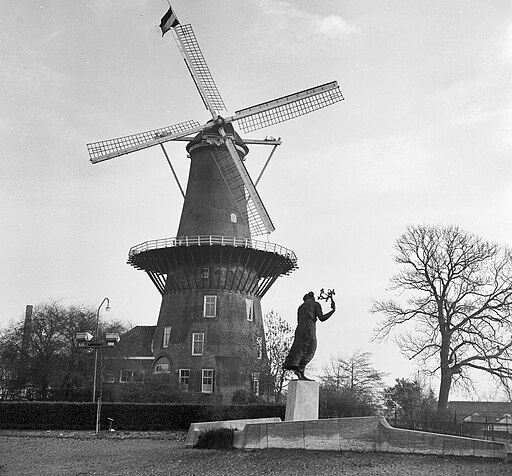 Photo of Dutch windmill with sails in mourning position for Queen Wilhelmina, 1962 Rijksdienst voor het Cultureel Erfgoed, CC BY-SA 4.0 <https://creativecommons.org/licenses/by-sa/4.0>, via Wikimedia Commons
Photo of Dutch windmill with sails in mourning position for Queen Wilhelmina, 1962 Rijksdienst voor het Cultureel Erfgoed, CC BY-SA 4.0 <https://creativecommons.org/licenses/by-sa/4.0>, via Wikimedia Commons The tradition continues: in July 2014, when 198 Dutch passengers were killed in the attack on Malaysian Airlines Flight MH17, windmills across the Netherlands set their sails in the mourning position to show respect for those who lost their lives.
The only problem with my new-found knowledge is that next time I see an immobile wind turbine, I’ll wonder what it’s trying to tell me.
When Windmills Can Mean Murder…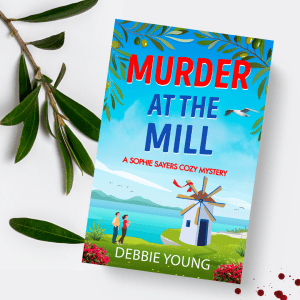 Join Sophie Sayers for a trip to a sunny Greek island in spring
Join Sophie Sayers for a trip to a sunny Greek island in springIf you also love windmills, you might like to try my sixth Sophie Sayers cosy mystery, Murder at the Mill (originally published as Murder Your Darlings).
In this story, aspiring writer Sophie Sayers travels in the spring to a tiny Greek island to join a writers’ retreat. It’s to be led by bestselling romantic novelist Marina Milanese – but then she goes missing on a solitary stroll to a derelict clifftop windmill. First on the scene of Marina’s disappearance, Sophie soon finds herself accused of murder, and must work fast to solve the mystery before the local police can arrive from the mainland.
This lighthearted, feel-good mystery introduces a lively group of eccentric authors, plus colourful Greek characters from the holiday hotel. Not to mention the elusive monks in the local monastery…
It’ll also make you feel as if you’ve had a Greek island retreat of your own!
Murder at the Mill is available to order in ebook, paperback, audio and large print, from wherever you prefer to buy your books.
February 7, 2024
How to Make More of 2024 Using the Pomodoro®Technique
In the February edition of the Tetbury Advertiser (because they don’t have a separate January issue), I’m talking about how to fit more into the New Year using a time-management method inspired by a simple kitchen device.
Having a birthday soon after the turn of the new year makes me feel as if time is passing me by too fast. Short, dark wintry days make it seem as if I’m up against a giant hourglass, its sands running away too quickly. Consequently, at this time of year I’m usually looking for new ways to make the most of every minute of every day – an impulse that diminishes as the daylight hours lengthen.
Just now, I’m testing the Pomodoro® Technique for time-management, invented not by a Professor Pomodoro but by university student Francesco Cirillo back in the Eighties.
How does the Pomodoro® Technique work?The name Pomodoro® comes from the Italian for “tomato”, in honour of a simple, time-management tool ubiquitous in those days: the plastic, mechanical tomato-shaped kitchen timer.
You just set the timer for 25 minutes and work flat out until it pings. Then take a five-minute break, before starting over.
Knowing the ticking clock’s demands will be short-term makes you more focused and productive.
After four stints, you earn a longer break, before starting over. Breaking larger tasks into smaller ones makes them so much easier to complete.
Think of the Pomodoro Technique as the vegetarian equivalent to that old saw of eating the elephant one bite at a time.
These days anyone under a certain age might gravitate towards a more high-tech timer, such as the stopwatch function on their smartphone. However, an analogue representation offers psychological benefits.
Would Countdown contestants feel so pressured without the giant wall-clock behind them? I think not.
My daughter, powering through university assignments, introduced me to the best of both worlds: a phone app showing a pie-style timer, showing at a glance the proportion of time remaining. If you prefer old technology – or have a penchant for kitsch – plastic tomato timers are still readily available.
If you’re after more sophisticated methods, or would feel silly with a plastic tomato on your desk, the official website www.pomodorotechnique.com offers tips, tools and training courses for the business environment. Find out more about its inventor, now an IT wizard whose motto is “work smarter, not harder”, at www.francescocirillo.com.
Me, I’m happy with the basic tomato. If only it counted as one of my five-a-day…
If the Pomodoro Technique doesn’t work for you, take heart: this month you’ll have an extra 24 hours at your disposal on Thursday 29th February.
Happy Leap Year, however you plan to spend it!
IN OTHER NEWS
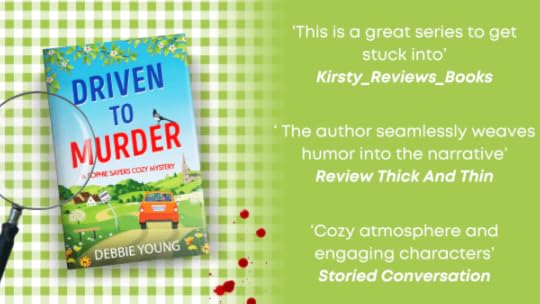
My latest novel, Driven to Murder, and the ninth Sophie Sayers Cozy Mystery, was published at the end of January and garnered high praise on its recent “blog tour” – when 21 different bloggers posted their reviews during the week of its launch.
This story hinges on the proposed cancellation of the village bus service – a crucial service to any rural community – and when Sophie Sayers and friends get involved in the campaign to save it, things don’t go quite according to plan.
The discovery of a dead body on the bus draws Sophie, now learning to drive in the perilous local country lanes, into her latest murder investigation. Outlandish new characters such as Leif Oakham, CEO of the Highwayman bus company, seedy driving instructor Saxon Arch, and his banned bus-driver brother Norman, join the regular cast in this fast-paced comedy mystery. Available now in paperback, hardback, ebook and audio from all good bookstores, online and offline.
Order your copy online here – or ask your local bookshop to order it for you





